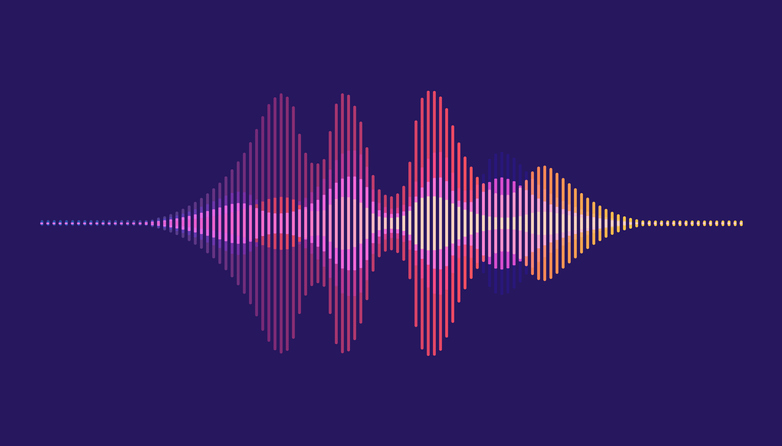
A number of new startups are testing voice as a non-invasive way to detect and track the progression of disease. These efforts, while promising, are still early — and much work is needed to translate algorithms that pick up on certain vocal characteristics into clinical tools.
For example, Vocalis Health is partnering with Mayo Clinic to identify potential biomarkers for pulmonary hypertension. The company was formed last year out of a merger between Israeli voice startups Beyond Verbal and Healthymize.
Dr. Amir Lerman, a Mayo Clinic cardiologist, said he was interested in whether Vocalis’ technology could be applied to the heart and lungs.
“(Pulmonary hypertension) is a disease that is rarely caught. Patients can have it but not have any symptoms for a long time,” he said. “It’s difficult to treat in the late stage.”
Earlier this year, the company published the results of a study in PLOS One that found a vocal biomarker for pulmonary hypertension. A total of 83 patients were divided into two groups: those who had high pulmonary arterial pressure (PAP) and those who didn’t. They were asked to record their voice three times on a smartphone, including reading a specified text, describing a positive experience and a negative experience.

A Deep-dive Into Specialty Pharma
A specialty drug is a class of prescription medications used to treat complex, chronic or rare medical conditions. Although this classification was originally intended to define the treatment of rare, also termed “orphan” diseases, affecting fewer than 200,000 people in the US, more recently, specialty drugs have emerged as the cornerstone of treatment for chronic and complex diseases such as cancer, autoimmune conditions, diabetes, hepatitis C, and HIV/AIDS.
Researchers found an association between the voice biomarker and patients who had a high mean pulmonary arterial pressure. Patients’ emotions as they spoke didn’t seem to have much of an effect on the results.
Lerman said they were able to identify specific segments of the voice that are correlated with the condition. It’s not necessarily something that would be audible to the average listener.
“The voice is spectrum of multiple frequencies. What we hear is just the one area that our ear is attuned to,” he said. “These frequencies are influenced by disease. You need to have a sophisticated algorithm to detect changes in frequency.”
With further studies, Lerman plans to compare the voice biomarker to imaging results. In the long-term, he hopes to use it as a non-invasive way of detecting new cases of the disease and monitoring patients remotely. For example, it could serve as an alert — a recommendation for further testing.
“There are a lot of factors that will play into the study. We are learning a lot,” he said. “We’re finding other combinations of voice biomarkers that are more specific to that. … I think it’s exciting we can use a system or application which is not intrusive, not expensive, and we can do it remotely to improve the care of our patients. “
Finding a biomarker
A plethora of companies are now focusing on voice as a potential screening tool. Vocalis and another startup, Sonde Health, are both developing voice-based Covid-19 screening apps.
Others are focused on using voice data to diagnose or track neurological conditions, such as Parkinson’s disease.
But in a budding field, there are still some precautions that need to be taken, said Visar Berisha, chief analytics officer and co-founder of Aural Analytics, a startup that is researching speech-based algorithms to track the progression of neurological disease.
“In some sense, speech’s biggest blessing is also its biggest curse. It’s sensitive to changes,” he said. “If there’s any disturbance, if you’re a little bit tired, if you’re feeling down or you didn’t get enough sleep last night, this appears as some change from baseline in your speech.”
That means that researchers have to be careful in interpreting the data and weeding out parameters that might not be relevant to what they’re studying. For example, a biomarker being developed for Parkinson’s disease might pick up on additional confounding variables, such as age, dialect, or other conditions that are commonly experienced with Parkinson’s, such as depression.
“There’s obviously great opportunity,” he said. “The principal challenge here is how do you discriminate what aspects of this information-rich signal are useful for the task at hand and which ones are nuisance parameters?”
How these tools are developed can also vary greatly depending on the disease, said Julie Liss, Aural Analytics’ chief clinical officer and co-founder. For example, an algorithm developed to detect cognitive impairment after a stroke might look for changes in the words a person said, rather than the tone or frequency of their voice.
“We might anticipate there would be changes in what the person said. Not necessarily in how they say it, but words they use and errors that they make,” she said.
Respiratory conditions, such as chronic obstructive pulmonary disease, can also result in changes in speech. For example, a speaker might pause more to take breaths, speak more slowly, or their speech might be very soft.
“If you don’t have adequate respiratory support, you might find that in different ways of speaking,” Liss said.
Ultimately, these speech qualities, such as breathiness, are translated into something measurable. But they’re complex, and consist of more than just one group of frequencies or acoustic parameter.
“The challenge isn’t building these supervised AI models,” Berisha said. “The challenge is making sure you’re doing something that’s clinically useful, because speech is sensitive to everything.”
Photo credit: iNueng, Getty Images













